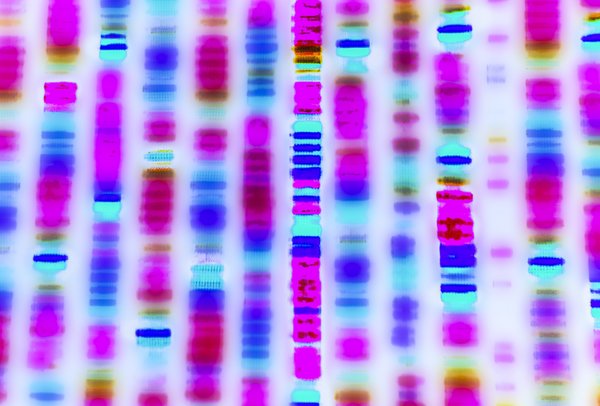Advances in the basic sciences are crucial for the invention of new technologies because they further our understanding of natural phenomena, the workings of the universe, and the rules that govern it. For example, discoveries in theoretical physics are helping explain once enigmatic laws of nature and spawning increasingly powerful technologies, including lasers. The problem-solving efforts of certain UL mathematicians in the fields of mathematical analysis and spectral theory will advance differential and integral calculus and high-performance computer calculation. Our researchers in genomics are working to retrace the first strains of green algae, while researchers in geophysics are documenting and modelling the gradual disappearance of permafrost. Regardless of their field, our researchers in the basic sciences are intellectual explorers.
Explore research related to basic sciences
The faces of research in the basic sciences
Algebra and number theory
Number theory is a particularly active field in the study of algebraic structures. It focuses on integers and uses tools derived from algebra to solve elaborate number theory problems.
Mathematical analysis
Analysis is the field of mathematics which studies continuous phenomena. It involves developing and studying the concepts of limits and convergence of sequences and functions, and then those of derivatives and integrals. Analytical research is divided into several fields, the main ones being complex analysis, harmonic analysis, functional analysis, and the theory of partial differential equations. Analysis is ubiquitous in mathematics because it forms the basis for several other branches of mathematics, including dynamic systems and differential geometry. Analysis is also very important for the development of other sciences. For example, partial differential equations are the main language used to state the laws and models that describe nature.

Alexandre Girouard, professeur titulaire, Department of Mathematics and Statistics
Member of Centre de recherches mathématiques (CRM)
Alexandre Girouard specializes in spectral geometry, a branch of mathematical analysis at the intersection of differential geometry and the analysis of partial differential equations. Scholars in this field study the links between the geometry of a space and the eigenvalues (energy levels) of operators that act on its functions. Professor Girouard takes a special interest in the Dirichlet-Neumann operator, which serves, among other things, as a model for the problem of electrical impedance tomography. His work focuses on isoperimetric inequalities (optimization under geometric constraints) and the study of asymptotic spectral behaviour and its applications for inverse problems.
Astrophysics
There is no shortage of topics to investigate in astrophysics—we have so much left to explore. Researchers at Laval study the formation, structure, and evolution of stars, including white dwarfs, neutron stars, and stellar black holes. Others focus on solar physics, the sun’s magnetic activity cycle, and the physical mechanisms that cause significant fluctuations in its amplitude and duration. Some astronomers are passionate about exoplanets and brown dwarfs, which they observe using new infrared astronomical instruments. The stellar and gaseous structure, dynamics, and evolution of galaxies also keep many astronomers busy, especially those who are looking to better understand dark matter.
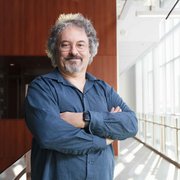
Laurent Drissen, professeur titulaire, Department of Physics, Engineering Physics and Optics
Member of the Centre for Research in Astrophysics of Quebec (CRAQ)
Laurent Drissen is an expert on massive stars with a special interest in ionized gas nebulae in the Milky Way, nearby spiral galaxies, and distant clusters of galaxies. To better observe these immense cosmic objects, he and his team developed a measuring instrument called SITELLE, which was installed on the Canada-France-Hawaii Telescope. Ten years in the making, SITELLE is a Fourier-transform imaging spectrometer capable of long-term, wide-ranging examination of emission lines.
Quantum chemistry
Quantum chemistry is a branch of theoretical chemistry that applies Quantum mechanics is a mathematical and physical theory that describes the evolution of physical phenomena in time and space at the atomic and subatomic scale. to molecular systems to study chemical processes and properties. The electrical and nuclear behaviour of molecules responsible for chemical properties can be described using quantum motion and other basic assumptions of quantum mechanics. Quantum mechanics has led to the development of digital calculation methods that have advanced modern chemistry, both in terms of understanding phenomena and in applications (Wikipedia).
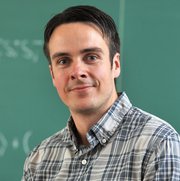
Paul A. Johnson, professeur agrégé, Department of Chemistry
Professor Johnson specializes in theoretical and computational chemistry. One of quantum chemistry’s main goals is to solve Schrödinger’s equation in order to describe the electrical properties of atoms and molecules. Although current methods are reliable for simple systems, it is currently impossible to accurately predict the chemical and electrical properties of molecules with reasonable amounts of computational power. Professor Johnson is working to find calculation methods that will reduce computational effort without compromising the accuracy of results. Among other things, he is trying to develop methods to model highly correlated electrons.
Mathematics education
The fundamental character of mathematics, both as a field of knowledge and as a language and tool in many realms of application, has given rise to a long tradition of reflection and research on its teaching and learning. Several distinguished mathematicians contributed to this movement, such as Felix Klein, George Pólya or Hans Freudenthal, thus furthering the emergence of works on the pedagogical difficulties specific to mathematical knowledge and its acquisition. An important part of this research focuses on the mathematical education of teachers, especially at the primary and secondary levels.
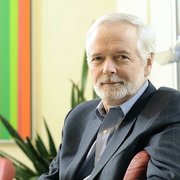
Bernard R. Hodgson, professeur titulaire, Department of Mathematics and Statistics
Professor Hodgson specializes in the mathematical education of teachers, from primary school to the CEGEP level, the influence of digital technology on teaching, and the history of mathematics in relation to teaching. One of the major components of his research is devoted to the development of mathematical contents specific to prospective primary and secondary school teachers. Taking a keen interest in teacher education, Professor Hodgson believes mathematicians have a specific contribution to bring to general issues in education, and to the preparation of primary and secondary school teachers in particular.
Behavioural ecology
Behavioural ecology is the study of animal behaviour under natural conditions. Researchers in the field use sampling, comparative analysis, and field observation to study basic animal behaviours such as finding food, mating, and group living that are crucial to individual reproductive success and population establishment in a given territory.
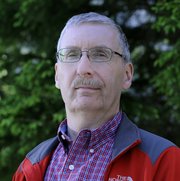
Gilles Gauthier, professeur titulaire, Department of Biology
Scientific director of the Centre for Northern Studies
Professor Gauthier is a biologist who specializes in the conservation of bird and mammal populations in northern ecosystems against the backdrop of climate change. He studies the effects of fluctuating lemming populations on interactions between predators and prey, including birds, raptors, and wolves, on Bylot Island, Nunavut. He is also interested in reproductive strategies, demographics, and migration, along with the energy balance of the greater snow goose.
The stars aren’t just a magnificent light show; they’re also fascinating subjects for study. My project is part of a broader effort to understand the end of life of massive stars that are dozens of times larger than the sun.
Marcel Sévigny, PhD student in physics supervised by Professor Laurent Drissen
Graduate studies
Make the leap to graduate studies
Explore our programs of study based on your interests
Genomics
Genomics is the study of a species’ genome, i.e., all of the genetic material encoded in its DNA. A genome’s coding sequence dictates how its cells function biologically. Studying these sequences provides a better understanding of the roles played by environment, lifestyle, and genetic makeup in the development of chronic diseases. Biologists use genomics to estimate the abundance of species in lakes, manage wildlife populations, and select more disease-resistant or faster-growing species, among other things. In basic science, genomics is used to understand and document the origin of species and the formation of new ones.
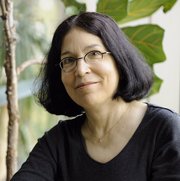
Monique Turmel, professeure titulaire, Department of Biochemistry, Microbiology, and Bio-informatics
Member of the Institute for Systems and Integrative Biology (IBIS)
Monique Turmel studies the molecular evolution of plants. She uses comparative genomics to understand and shed light on the branching order of the main evolutionary strains of green algae. She focuses specifically on the Chloroplasts are the structures responsible for photosynthesis in plants. genome, because mutations detected in these genes make it possible to reconstruct the genealogy of groups of plants and their order of appearance over the course of evolution.
Geochemistry
Geochemistry uses the concepts and tools of chemistry to study the earth and sediments. Geochemists identify and characterize chemical, mechanical, and mineralogical processes that modify the chemical composition of materials. On a larger scale, they work to determine the composition of the Earth’s layers, from the atmosphere to the inner core. It also uses geochronology to determine the age of rocks and events that have affected the Earth.
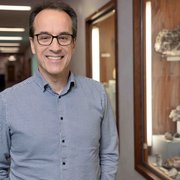
Marc Constantin, professeur titulaire, Department of Geology and Geological Engineering
Member of Centre de recherche sur la géologie et l'ingénierie des ressources minérales (E4M)
Professor Constantin specializes in analytic geochemistry, Petrology is the study of the physical, chemical, and biological mechanisms that cause rock formation and transformation., igneous geochemistry, and the mineral sequestering of carbon in Ultramafic rocks are magmatic and megamagmatic rocks that are very low in silica.. One of the projects he is working on involves characterizing rare earth deposits in alkaline intrusions. The project aims to identify and model the metallogenic processes that contribute to the local enrichment of rare earths in alkaline magmas. It also seeks to compare and assess the geological, mineralogical, and geochronological characteristics of mining deposits.
Geophysics
Geophysics is the study of the earth, its gaseous envelope, and its magnetic and gravitational fields using physics methods. It is situated at the intersection of geology, physics, mathematics, and computer science. A distinction is made between Internal geophysics includes gravimetry, geomagnetism, seismology, and geodynamics., Boundary layer geophysics includes oceanography, meteorology, climatology, and glaciology., and External geophysics addresses variations in the geomagnetic field, the upper atmosphere, cosmic radiation, and atmospheric pressure..
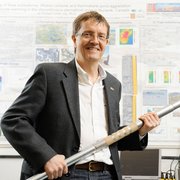
Richard Fortier, professeur titulaire, Department of Geology and Geological Engineering
Directeur du Centre d'études nordiques
Professor Fortier specializes in cryohydrogeophysics, geotechnology of cold regions, and geostatistics. He has developed a unique linear thrust system that is used to examine permafrost degradation. He also uses other non-destructive geophysical methods to study and understand the physical processes involved in the progressive disappearance of permafrost, including induced polarization tomography, ground-probing radar, and electromagnetic sounding. Professor Fortier draws on the data he collects to develop geocryological models that simulate the thermal regime of permafrost.
Theoretical physics
The purpose of physics is to understand what the universe is made of using the most advanced scientific instruments at our disposal. Physicists attempt to identify the laws of nature that explain cause-and-effect relationships using theories expressed in mathematical language. Examples include Newton’s theory of gravitation, Einstein’s theory of general relativity, and, more recently, the Standard Model, which was confirmed by the discovery of The Higgs boson is an elementary particle that explains why some particles have mass while others do not. Its existence was postulated by six researchers in 1964.. Elementary particles physics is one of the most ambitious branches of theoretical physics because it examines nature’s most fundamental components and interactions.
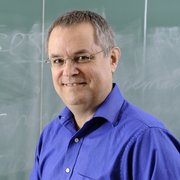
Luc Marleau, professeur titulaire, Department of Physics, Engineering Physics and Optics
Member of the Theoretical Physics Group (GPhyT)
Professor Marleau specializes in the theoretical physics of elementary particles and quantum field theory. He works on extensions to the standard particle model, most of which assume the existence of new particles that transform our understanding of the universe on both the subatomic and cosmic scales. Luc Marleau is part of Université Laval’s Theoretical Physics Group, which focuses on quantum field theory, physics beyond the Standard Model, statistical physics, and complex networks.
Spectral theory and complex analysis
In the natural sciences, engineering, economics, and computer science, there exist systems with input and output data for which the superposition of two inputs results in the superposition of the corresponding outputs. These systems can be analyzed using complex analysis and spectral theory, the branch of mathematics that studies matrices and their eigenvalues, infinite-dimensional counterparts, operators, and spectra. Spectral theory has numerous applications for technology, including control systems, image compression, and the Google PageRank algorithm.
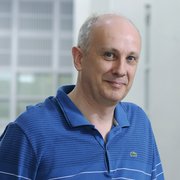
Thomas Ransford, professeur titulaire, Department of Mathematics and Statistics
Canada Research Chair in Spectral Theory and Complex Analysis
Professor Ransford is fascinated by fundamental problems in spectral theory, a branch of pure mathematics. He uses ideas from function theory, a wide-ranging extension of differential and integral calculus, to establish new theorems on matrices and operators. These theorems have potential applications in a number of fields, including numerical linear algebra, the theory that underlies high-performance computing.
Mathematical objects exist in a beautiful world that is aesthetically quite pleasing. But math is also useful and practical. It’s crucial for everyday life.
Bernard R. Hodgson, professor, Department of Mathematics and Statistics
